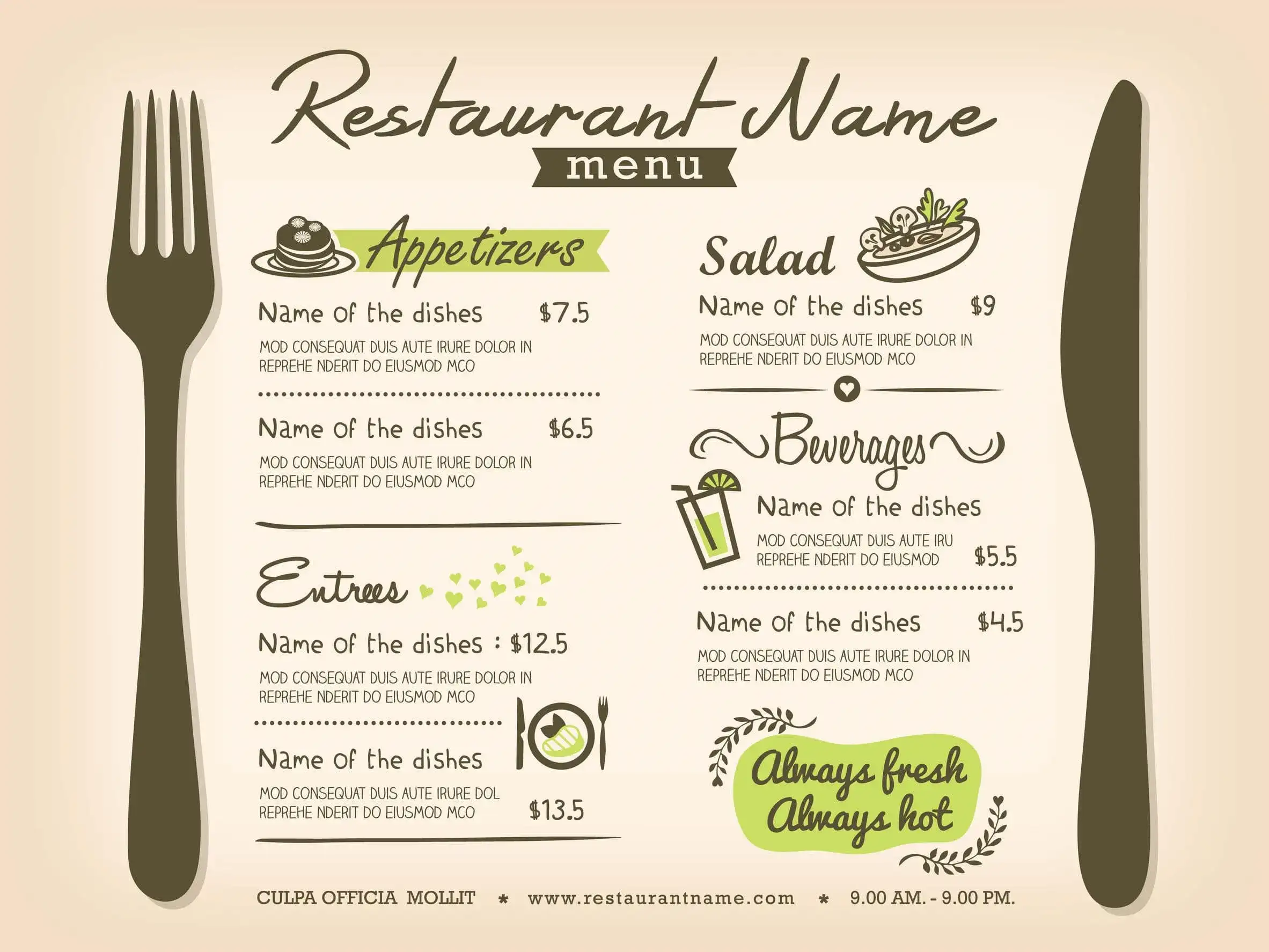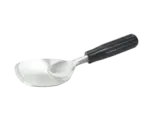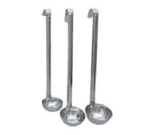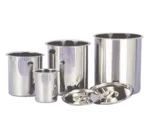
How to Design a Healthy Restaurant Menu
Studies show that Americans are taking in calories from eating out more than ever before. It’s no secret that many people eat more than they’re supposed to. As people’s lives become more hectic, more diners are eating out simply for the convenience of having someone else prepare their food and taking care of the dishes afterward.
Of course, commercial foodservice establishments are not entirely responsible for the obesity epidemic in the US. But restaurants still play a part in ensuring that their customers are eating delicious, healthy meals. It’s not just good for the national waistline; foodservice businesses are also benefitting from the switch to healthier menus. Research shows customers prefer to visit restaurants that have healthy meal options than those who don’t, resulting in larger foot traffic that leads to better sales and profits.
What is Healthy?
Different people have different notions of what is healthy. Almost everyone agrees that a garden salad is healthy, but the consensus stops there. If you want to stand out, you have to serve more than an unoriginal garden salad, but your idea of what makes food healthy should agree with your customer’s notions of healthy food.
Millennials, for instance, are all about eating fresh, unprocessed food with no artificial ingredients. They can eat as much as they want, as long as they eat only good, “clean” food. On the other hand, baby boomers may be all about cutting back on their calories. It’s okay to eat processed foods as long as it comprises a very small fraction of their total calorie count. Some people are also very strict with counting only their calories, while others dig deep into the details by using kitchen scales to measure their macros (i.e. how much protein, carbohydrates, and fats they eat).
Even scientists don’t agree on what makes healthy food, so the safest route to take is to survey your customers and ask them what they’re looking for in healthy food.
Strategies for Designing a Healthy Menu
Add new dishes and update old ones.
 You don’t have to overhaul your existing menu. You simply have to start with a few dishes that fit your customers’ idea of what is healthy. Again, what is healthy for some may not be okay for others. Advocates of the ketogenic diet, for example, may be happy chugging down a mug of buttered coffee, while calorie counters would rather go for a cup of low-calorie green tea. In general, however, most people agree that they’d rather steer clear of trans-fats and simple sugars and go for moderate to high-protein meals.
You don’t have to overhaul your existing menu. You simply have to start with a few dishes that fit your customers’ idea of what is healthy. Again, what is healthy for some may not be okay for others. Advocates of the ketogenic diet, for example, may be happy chugging down a mug of buttered coffee, while calorie counters would rather go for a cup of low-calorie green tea. In general, however, most people agree that they’d rather steer clear of trans-fats and simple sugars and go for moderate to high-protein meals.
Another way is to take a look at your existing menu and find ways to substitute ingredients with healthier alternatives. For example, you can use whole grains for white rice or olive oil for vegetable oils. Look for instances where you use packaged foods and see if you can take them out and add more fresh produce instead. Burger buns, for instance, can be substituted with lettuce wraps, eggplant slices, or Portobello mushrooms. Simply reducing your portions to ¼ or even ½ the original size can also significantly reduce the calories of a dish without changing the recipe.
Provide detailed caloric and/or macronutrient information.
Calculate the number of calories in each of your dishes and include this in your menu. Earlier in 2018, the FDA required restaurant chains with at least 20 locations across the US to include caloric information in their menus and menu boards. However, even restaurants with less than 20 branches can benefit from providing caloric information to their customers. If your customers prefer more detail, include the macronutrient profile of each dish as well.
The best way to go about this is to team up with a certified nutritionist or dietitian who can analyze your menu and the contents of each dish. They can also offer expert advice to help tweak recipes for a healthier twist. If working with a nutritionist or dietitian is too much for your budget, you can take a look at online nutritional analysis software, which can provide detailed nutritional information for each of your recipes for a fee.
Redesign your menu.
 Attract attention to your healthy items by using visual aids, such as placing them in the upper left and right corners of each page. The eyes naturally fall into place on these pages and customers will see your healthy dishes right away. You can also use boxes or lines to distinguish the healthy items from the rest of the menu. Typically, restaurants place their most popular food items in these places, but you can use them for healthy dishes as well.
Attract attention to your healthy items by using visual aids, such as placing them in the upper left and right corners of each page. The eyes naturally fall into place on these pages and customers will see your healthy dishes right away. You can also use boxes or lines to distinguish the healthy items from the rest of the menu. Typically, restaurants place their most popular food items in these places, but you can use them for healthy dishes as well.
You may also highlight items using different colors or icons to indicate that they are low-fat, come in smaller portions, or have more fruits, vegetables, or whole grains. You can also help customers make healthier decisions by including suggestions such as “hold the butter,” “ask for dressing on the side,” or “choose half a sandwich.”
Train your staff to promote healthy dishes.
Educate your staff about the importance of preparing, promoting, and providing healthy food. Most items, such as fresh produce, spoil faster than products with preservatives, so staff should encourage customers to go for healthy dishes. It’s a win-win for the customer and the restaurant.
Chefs must also be trained to prepare tasteful dishes using healthy ingredients and arrange them in a way that is pleasing to the eyes. They must also learn how to cross-utilize ingredients to keep food waste to a minimum.







